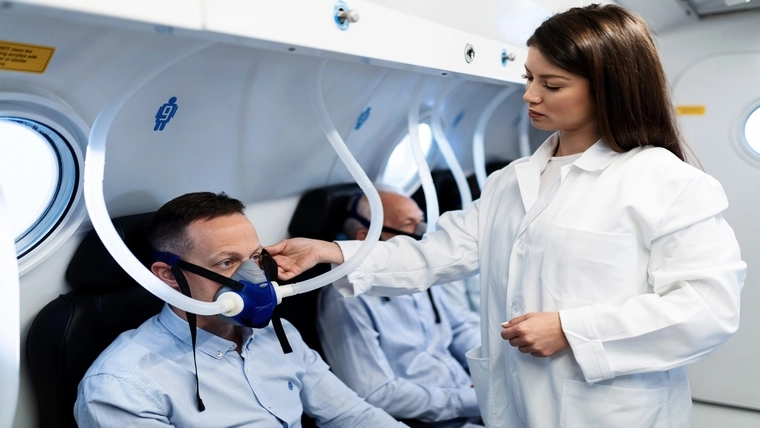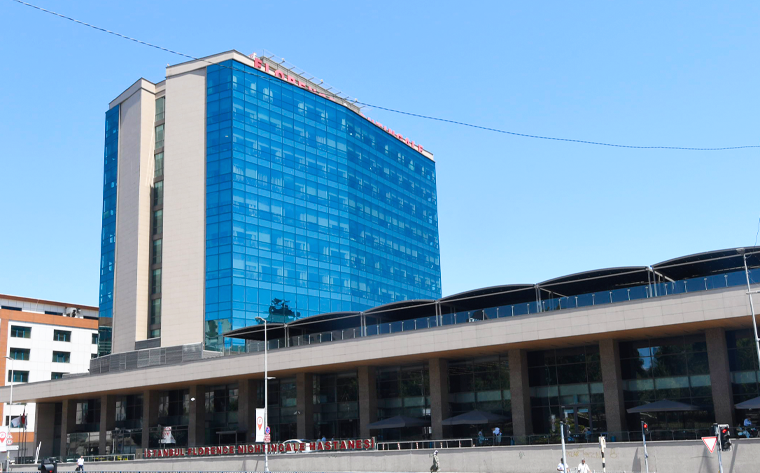
What is Hyperbaric Oxygen Therapy?
Hyperbaric Oxygen Therapy is applied to the patient by intermittently administering pure oxygen under higher than normal pressure in a closed pressure chamber. Hyperbaric Oxygen Therapy, which is used to treat many health problems from blood loss to soft tissue infections, is one of the most important treatment methods, especially for diseases that require tissue healing. Thanks to the pressurized oxygen applied, the amount of oxygen dissolved in the liquid part of the blood increases significantly and the oxygen content in the tissues reaches its maximum level. Also known as high-pressure oxygen therapy, it is possible to treat many diseases such as diabetic wounds, which commonly result in amputation.
How is Hyperbaric Oxygen Therapy Applied?
Hyperbaric oxygen therapy, to put it simply; is a treatment method applied by breathing pure oxygen, that is, 100% oxygen, to the patient who is taken into a closed pressure chamber. During hyperbaric oxygen therapy, patients are taken into cabins called single or multi-person pressure chambers. Pressurized oxygen is pressurized into single-person cabins and air is pressurized into multi-person cabins, ensuring that the pressure inside is approximately 2-2.5 times the normal atmospheric pressure. When the pressure in the cabin reaches the desired level, pure oxygen is given to the patients with a mask. Patients can take oxygen lying down or sitting down. When pure oxygen is given, patients may feel pressure in the ears as they do on a plane in the first stage. For this reason, this stage is called the diving stage. The specialists who perform the treatment in the pressure chambers can be contacted. When the desired pressure level is reached, the specialists want the patients to put on their masks and to take these masks off at certain intervals to breathe the air of the environment in order to prevent the negative effects of taking pure oxygen for a long time. In the last stage of the treatment, the pressure is brought to normal and the patient is taken out safely.
How Does Hyperbaric Oxygen Therapy Work on the Body?
Hyperbaric oxygen therapy affects the human body in two different ways. The first is the direct effect of pressure, and the second is the effect of dissolved oxygen. Since pressure and volume are inversely proportional, increasing pressure reduces the volume of air bubbles in the body. For this reason, HBOT specialists benefit from the direct effect of pressure in the treatment of "diseases such as the bends and gas embolism" that occur during diving. Compared to oxygen breathed in a normal atmosphere, the dissolved oxygen given to patients during hyperbaric oxygen therapy increases the oxygen capacity in body tissues and cells by approximately 15 times.
In Which Diseases Is Hyperbaric Oxygen Therapy Used?
Hyperbaric oxygen therapy has been used as a primary treatment method or a supportive treatment option for many diseases since its discovery. Some of its areas of use can be listed as follows:
- Treatment of decompression sickness, one of the serious health problems frequently encountered by divers,
- Stove gas (carbon monoxide) poisoning and other acute smoke inhalation cases, which are common especially in winter months,
- Air-gas embolism in the lungs
- Necrotizing infections of soft tissue,
- Muscle injuries in the form of crushing and compression that occur with crush syndrome,
- Compartment syndrome, which can result in muscle and nerve tissue loss
- Acute traumatic ischemia,
- Diabetic wounds and infections, diabetic foot etc.
- Chronic non-healing wounds,
- Bone inflammation (chronic osteomyelitis)
- Sudden hearing loss,
- Excessive blood loss,
- Thermal burns,
- Tissue necrosis resulting from radiation used in the treatment of diseases such as cancer,
- Brain abscess,
- Anoxic encephalopathy,
- Sudden loss of vision,
- MS disease,
- Sports injuries,
- Acute inflammation seen in the skull bones, the sternum bone located on the front of the chest and the vertebrae,
- Gas gangrene table,
- Non-healing wounds and necrosis after surgery,
- After risky graft and flap applications,
- It is used in the treatment of circulatory disorders in the tissue that develop after interventions such as hair transplantation and filler injection.
Are There Any Side Effects of Hyperbaric Treatment?
Before starting the treatment, the general health status of the patient is examined in detail by a specialist doctor. All the conditions that the patient should be careful about during the treatment are explained to the patient who is considered suitable for the treatment. However, sinus barotrauma, dental barotrauma, lung barotrauma can be seen, although rare, due to hyperbaric oxygen therapy. In some patients who receive long-term treatment, a condition called temporary myopia may occur, which improves within two months after the treatment.
What are the features of our device?
How is Hyperbaric Oxygen Therapy Applied?
The treatment is performed in a specially designed hyperbaric oxygen chamber. The patient breathes pure oxygen under high pressure for a set period of time. The duration of the treatment and the number of sessions vary according to the patient's condition and treatment needs. The treatment usually lasts between 60-120 minutes and may require several sessions.
Who Should Not Receive Hyperbaric Oxygen Therapy?
Although hyperbaric oxygen therapy (HBOT) is an effective treatment for many diseases and conditions, it may not be suitable for some people. HBOT may not be used in people with certain health conditions. Here are the people who should not receive hyperbaric oxygen therapy and the situations in which this treatment is not safe:
- Pneumothorax (collapsed lung): HBOT can carry serious risks in people with air leaks in the lungs.
- Chronic Obstructive Pulmonary Disease (COPD): HBOT may cause lung complications in these patients.
- Acute Ear Infections: In people with ear infections, pressure changes can increase the risk of pain and damage.
- Sinus Problems: People with sinus infections or blockages are at risk for discomfort and complications during treatment.
- High Fever: The use of HBOT may not be appropriate in patients with fever, as the treatment may further increase body temperature and lead to discomfort.
- High Fever: The use of HBOT may not be appropriate in patients with fever, as the treatment may further increase body temperature and lead to discomfort.
- Certain Chemotherapy Drugs: Some chemotherapy drugs can interact with HBOT and increase the risk of side effects.
- Radiation Therapy: Patients receiving radiation therapy should be carefully evaluated under the supervision of a physician.
- High Blood Pressure: HBOT can be risky for people with uncontrolled hypertension, as pressure changes can raise blood pressure even further.
- Serious Heart Problems: HBOT may not be suitable for people who have had a heart attack or have serious heart conditions because of the stress on the heart.
- Pregnancy: The effects of HBOT on pregnant women have not been adequately studied and therefore it is generally not recommended during pregnancy.
- Asthma or Bronchitis: These conditions can cause the airways to close and lead to difficulty breathing during HBOT.
What are the Risks and Side Effects of Hyperbaric Oxygen Therapy?
Hyperbaric oxygen therapy is generally safe, but it does carry some side effects and risks. These side effects include ear pain, sinus pressure, temporary vision changes, and, rarely, oxygen toxicity. You can minimize these risks by following your doctor's instructions during and after treatment.

